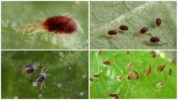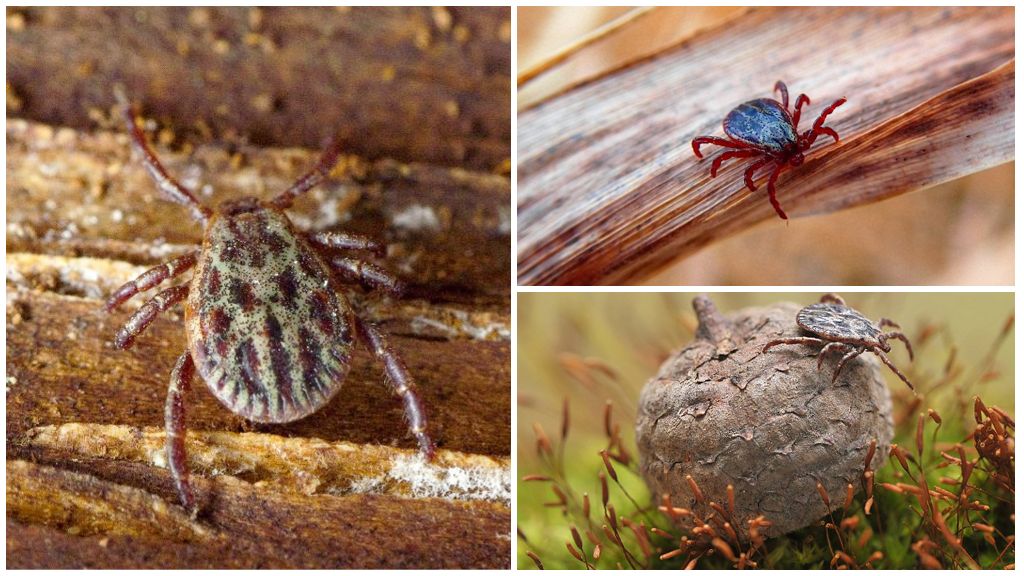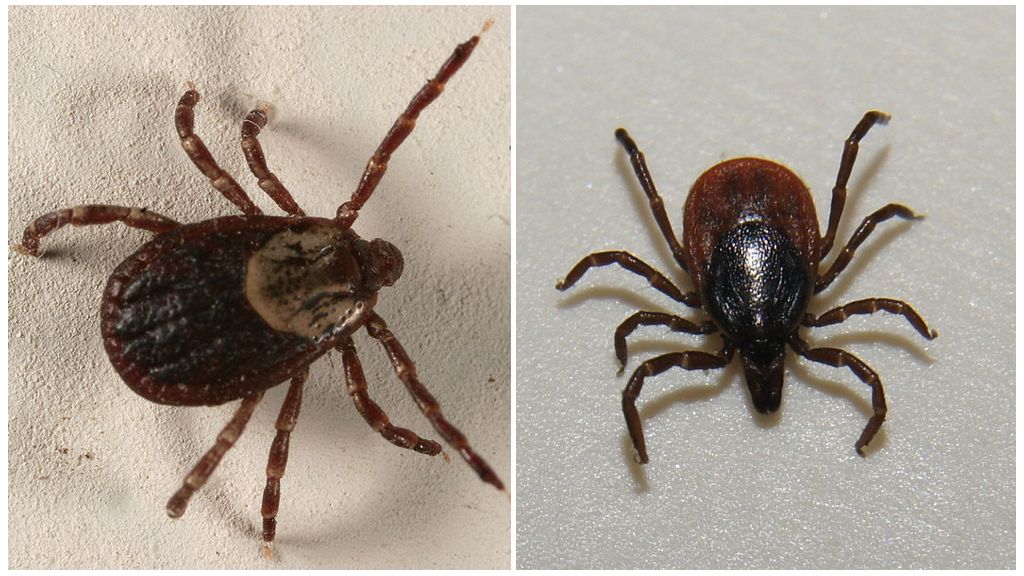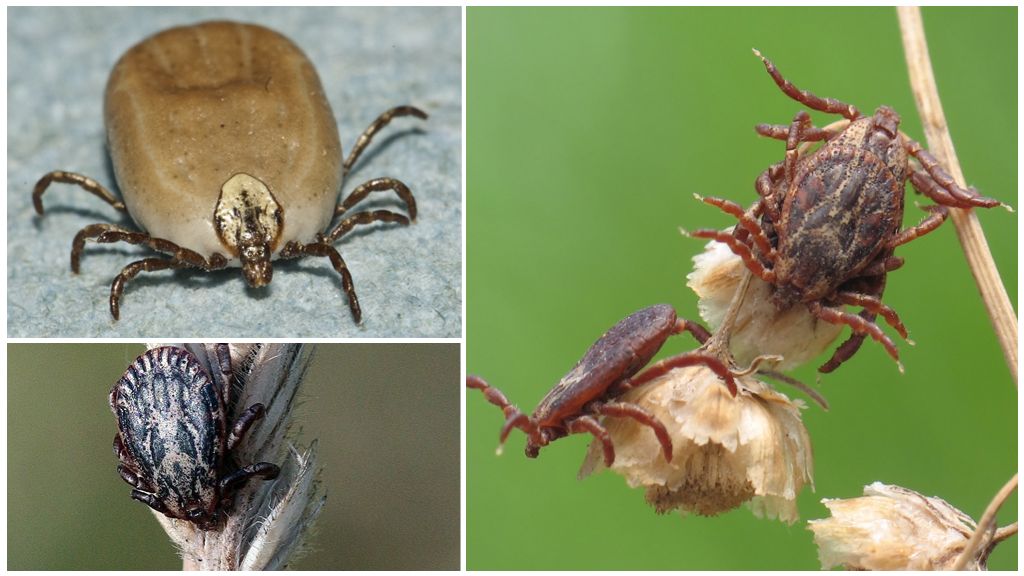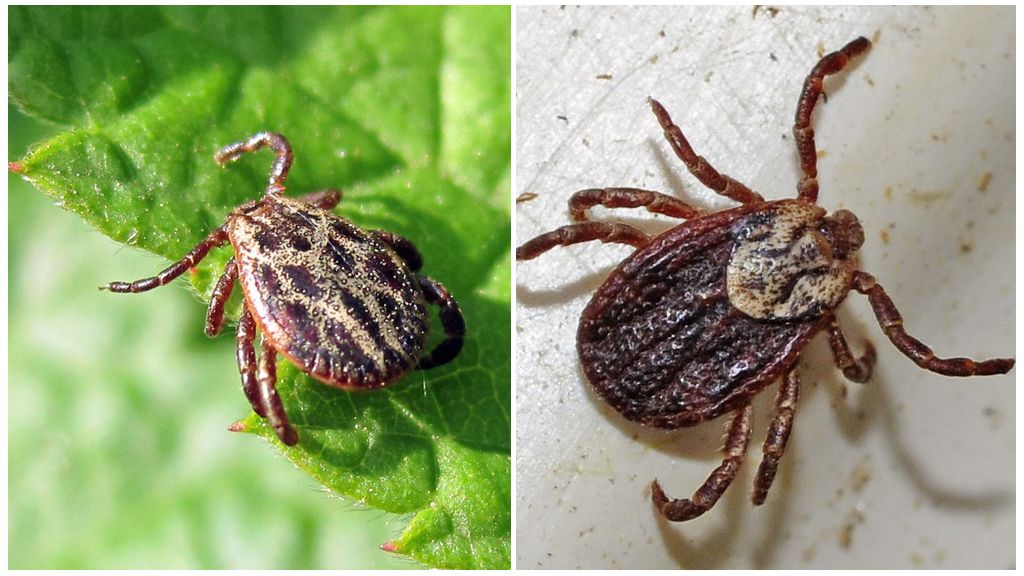- Spider mite and its larvae
- Pest Management Methods
- Spider mite insecticides
- Spider mite plants
Spider mites can be found everywhere: on vegetable crops in the garden, on fruit trees, shrubs in the garden, and even on indoor plants. The family of this pest has more than a thousand species common on all continents except the South and North poles. Such a widespread spider mite received due to its small size, good fertility and omnivorous.
What does a spider mite look like?
Almost every gardener and florist is familiar with the appearance of a spider mite. He is a representative of arachnids and is very similar to a small spider. The body is oval in length from 0.3 to 0.8 mm. Females can exceed the size of males almost twice. Mite has four pairs of limbs, at the ends of which there are sharp hooks, with the help of which he cleverly moves over the leaves of the plant.
Larvae are small spiders of pale green or brown color with 6 limbs. Adults have a bright orange or red color.
On a note!
Egg laying looks like translucent beads of a round yellowish shape scattered on the underside of a leaf.
A photo of the spider mite and its larvae is presented below.
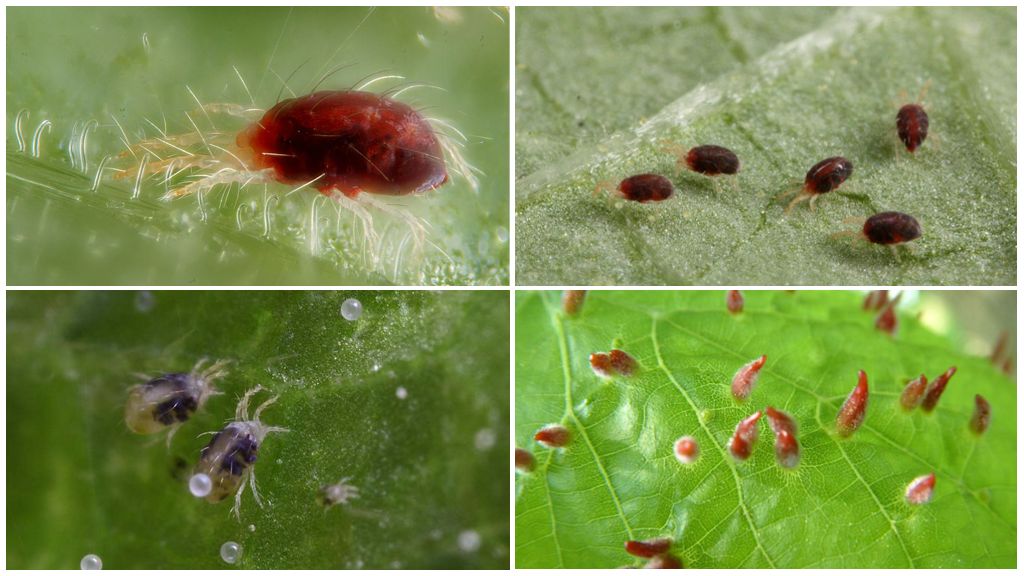
The spider mite is of several types:
- red spider mite mainly inhabits flowers: rosescallah orchidscineraria;
- cyclamen - prefers cyclamens, balsams, chrysanthemums;
- wide spider mite infects cacti, oleander, citrus leaves, ficuses;
- bulbous root tick - affects the bulb of plants underground, gnawing the middle and turning it into dust;
- Atlantic and Pacific - the closest relatives of the common tick, live in warm and humid regions and feed on leaves of citrus fruits and palm trees;
- a flat orange tick or squamous is often found on violet leaves.
Often settles in spider mite on cucumbers in a greenhouseparasitizes on seedlings, strawberriesraspberries currant, eggplant.
Harm of ticks for plants
The ordinary spider mite got its name due to the weaving of a small cobweb from the inside of the leaf, where it is most often located. The tick is considered a pest because of its preference for food - it sucks the juice from plants, after which the leaves turn yellow and dry. When a parasite destroys a large number of leaves of a plant, the process of photosynthesis is disrupted, which entails a decrease in yield and even death of the crop.
The first signs of a spider mite that can be seen with the naked eye are the appearance of yellow and brown spots on the leaves. In these places, parasites suck out the juice of the plant. Also on the back of the sheet is a thin film of white web. If you look closely, you can see randomly moving red or orange dots - this is the spider mite.
On a note!
Many beginning summer residents when they see the affected tops of vegetables may think: is a tick dangerous to humans? There is no threat to human health from these small creatures.
Garden and garden parasites are very prolific.Under favorable conditions, one female in her short life of 30 days can lay more than a hundred eggs. After 2-3 days, voracious larvae appear from them, and after 2 weeks, no less voracious adults. When their number increases to several hundred thousand, the plant on which they live is unsweetened.
Affected leaves of a room or garden crop cannot synthesize sunlight, and gradually the plant weakens, becomes vulnerable to diseases and viruses. If the symptoms of infection are not noticed in time and the fight against plant mites is not started, the representative of the flora dies.
Pest Management Methods
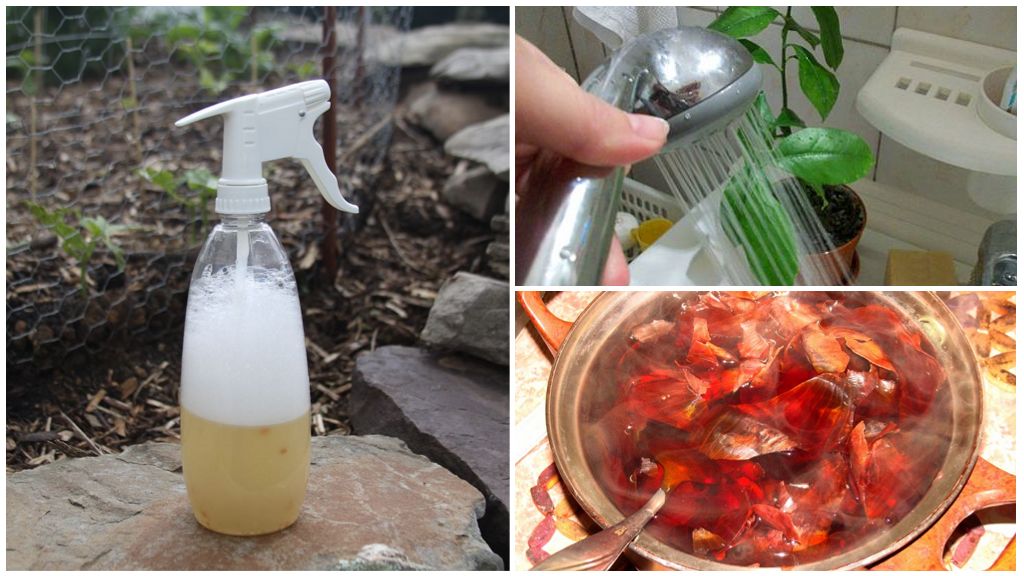
If a parasitic spider is found in a vegetable or flower culture, you can use folk remedies to get rid of spider mites. Among the most popular methods, several are distinguished:
- The easiest method is spraying with ice water. This option is suitable for saving roses.
- An infusion treatment onion peel is good against spider mite. It is necessary to pour a handful of husks with one liter of water, cover tightly and wait 6-7 hours. The resulting liquid is sprayed onto the affected leaves.
- Infusion on garlic is a universal remedy against a garden tick. His recipe is simple: 150-200 grams of finely chopped garlic are infused in one liter of water in a closed container for 5 days. The resulting concentrate in an amount of 6-10 grams is diluted in a liter of water. The working solution is used to spray foliage.
- Soap solution suitable for flower processing and vegetable crops. To do this, 50 grams of laundry soap is triturated and dissolved in a liter of water. Soap medicine is sprayed onto the plant.
- Alcohol can be a good way to protect a plant from a flower tick. It is necessary to apply a few drops of alcohol on a cotton swab and rub each leaf of the flower with it. Excessive use of alcohol can cause burns to tender leaves.
- To destroy the spider mite, one can purchase its natural natural enemy, the predatory tick of phytosailus. It multiplies rapidly and will help in a short time to get rid of parasites at all stages of development. And when the food is over, the predator will die.
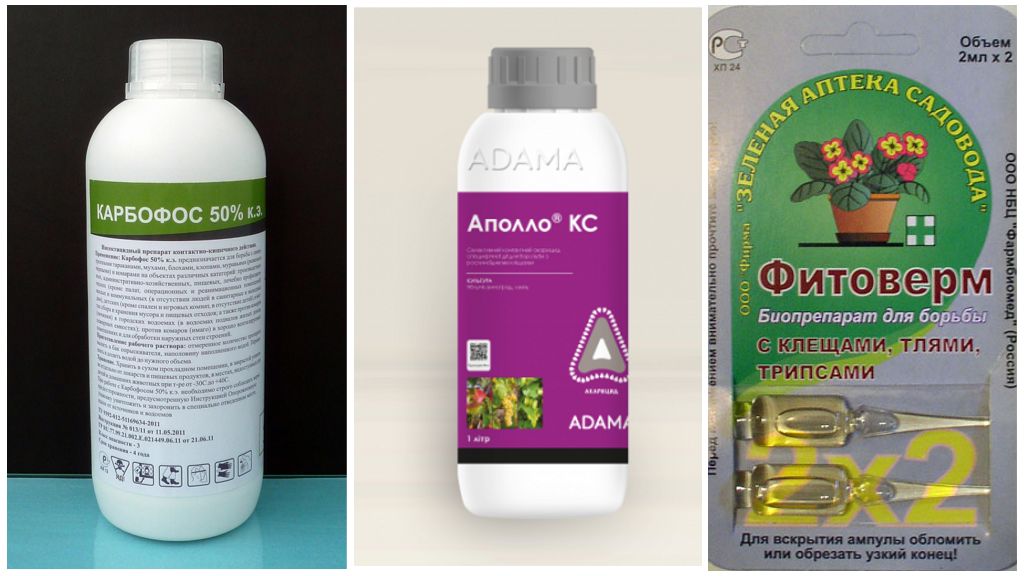
When infection with a spider web pest turned into a large-scale disease, it is necessary to switch to radical methods. Chemical insecticidal and acaricidal drugs able to save the plant even when it is almost completely subject to this scourge. Among them are very popular:
- Karbofos - an organophosphorus agent based on the active substance malathion. Adversely affects parasites, in contact with them causes paralysis and poisoning. Processing of tops of garden crops should take place in calm, dry weather early in the morning. The protective effect lasts for 7-10 days.
- Apollo is an effective acaricide whose action is aimed at poisoning eggs and tick larvae. An adult individual in direct contact with a chemical preparation ceases to be capable of reproduction.
- Fitoverm is a biological insecticide. It can be used for indoor flowers without fear of chemical poisoning. The ampoule with the drug is diluted in water and sprayed with foliage. The protective effect lasts up to three weeks.
- Plant Pin sticks are a new way to protect the flora from ticks. The sticks are saturated with the active substance butoxycarboxim. They are stuck in a pot around the perimeter from the stem of the plant. The number of sticks depends on the diameter of the pot. The larger it is, the greater the number of sticks you need to stick into the pot. When watering, water dissolves the insecticide and impregnates the roots with it. The plant becomes invulnerable to parasites within 2 months.
Also effective Anti-tick, Tick-borne.
Plant Pest Prevention
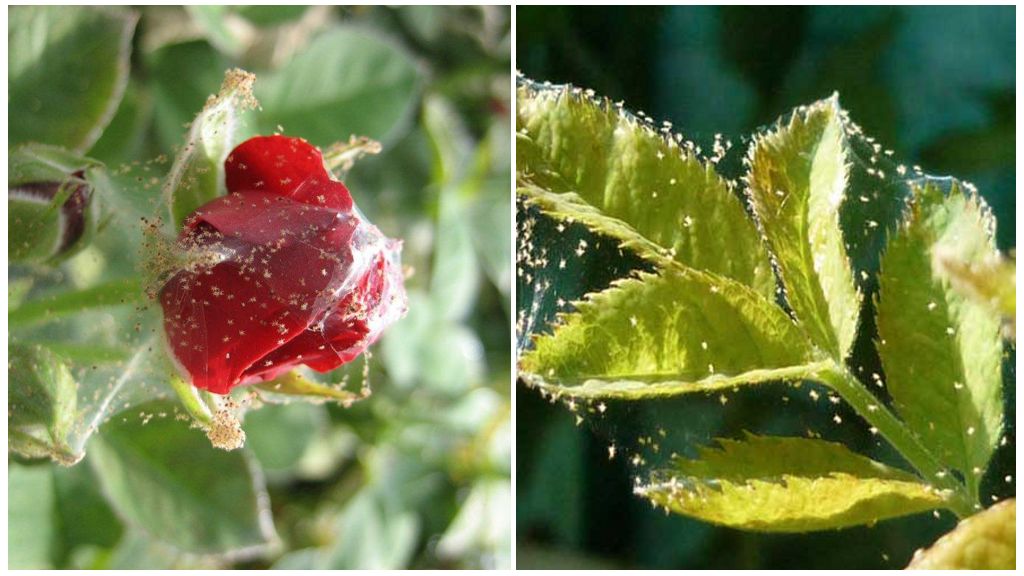
To prevent the appearance of a spider pest, it is necessary to eliminate any possibility of infection of plants with them. To do this, you need to know where the spider mite comes from. It can crawl from a neighboring plant, fly over with a gust of wind, accidentally be brought in from the street. To prevent these accidents, you must follow certain rules:
- check for pests every plant at least once a week;
- Do not put a new flower brought from outside near flower cultures until it passes the two-week quarantine period;
- Do not bring flowers cut in the street into the house and do not put them on the windowsill;
- more often carry out wet cleaning, wash windows, windowsill, frames, wash curtains;
- more often spray foliage with plain water or soapy water;
- as a preventative measure, lower the temperature in the room with flowers, ventilate the room;
- to clean the fallen leaves, grass, tops in the garden and in the garden;
- destroy weeds in the beds;
- to repel pests, you can plant garlic or marigold next to vegetable crops;
- when buying flower land in a store or taking it on the street, you need to calcine it in a microwave or oven;
- if a tick is found on one of the indoor flowers, it is necessary to remove it away from other plants.
All these simple measures will reduce the risk of contracting a dangerous parasite. The main thing is to be attentive to your favorite plants and have in stock several ways to save them from the spider mite.
